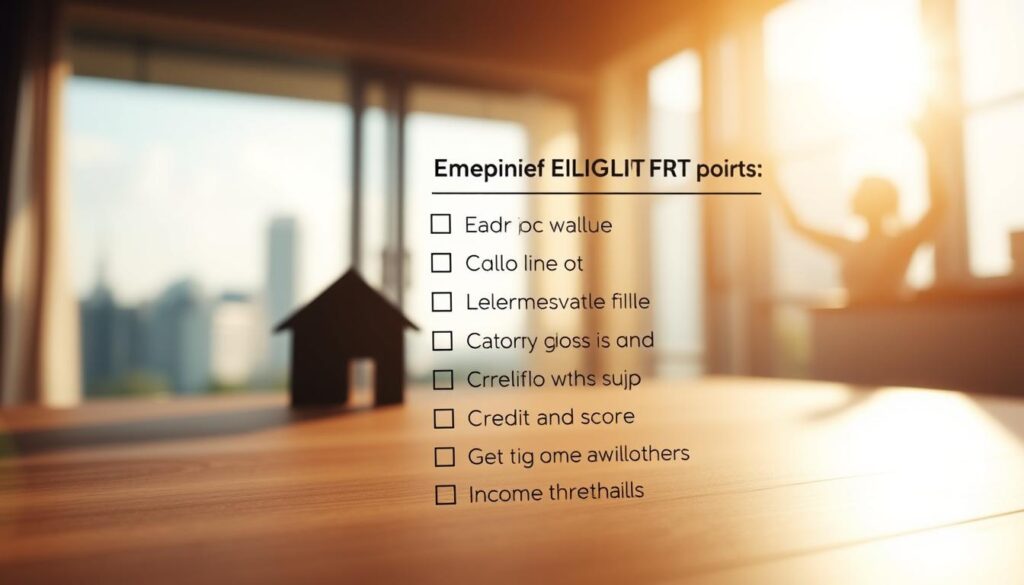Did you know U.S. homeowners hold over $17.2 trillion in untapped property value? With an average of $207,000 available per household, many explore alternatives to traditional loans. Unlike HELOCs or mortgages, home equity agreements provide lump-sum cash without interest or monthly payments.
Over 60% of owners consider these deals to avoid debt. Instead of repaying fixed amounts, you share a portion of your property’s future appreciation. The industry now includes nine major providers, each with unique terms and fees.
Choosing the right partner depends on transparency, reputation, and contract details. Look for fair valuation methods and flexible agreement structures. This guide helps you compare options wisely.
What Is Home Equity Sharing?
Tapping into your property’s worth doesn’t always mean taking on debt. With home equity sharing, you receive cash upfront in exchange for a portion of your property’s future value. Unlike loans, there are no monthly payments or interest charges.
How It Differs From Traditional Loans
Traditional options like mortgages or HELOCs require fixed repayments over 15–30 years. Equity sharing skips this entirely. Investors fund a lump sum, and repayment happens only when you sell or the agreement ends.
Key contrasts:
- No credit checks: Approval hinges on your home’s value, not your score.
- Flexible timelines: Terms span 10–30 years, with no penalties for early sale.
- Shared risk: If your property loses value, investors absorb part of the loss.
Key Terms to Understand
These agreements use unique metrics:
- LTV ratios: Most providers require 70–85% loan-to-value, meaning you keep 15–30% equity.
- Risk adjustments: Your home’s appraised value may be reduced by 2.75–20% to account for market fluctuations.
- Appreciation share: Investors typically claim 10–25% of your property’s increased value at sale.
Always review buyout clauses and depreciation protections before signing.
How Home Equity Sharing Works
Flexible funding options let you leverage your home’s future value today. Unlike loans, these agreements exchange cash now for a share of appreciation later. Here’s the breakdown.
The Application Process
Getting funds involves four steps:
- Prequalification: Share basic home details online for initial approval.
- Appraisal: A pro assesses your property’s worth (costs $350+).
- Risk adjustment: Providers may reduce the value by 3–20% for market safety.
- Funding: Cash arrives in days if terms are signed.
Risk Adjustments and Appraisals
Your home’s appraised value isn’t always the final number. Companies like Point apply a “risk cushion” to account for downturns. For example:
- A $500K property might be adjusted to $450K.
- If you accept a 10% share, you’d get $45K upfront.
Repayment Terms and Scenarios
Terms vary by provider. Compare two popular options:
| Provider | Max Term | Equity Required | Max Funding |
|---|---|---|---|
| Hometap | 10 years | 25% | $600K |
| Point | 30 years | 30% | $500K |
Repayment kicks in when you sell or refinance. If your home jumps to $600K, a 10% share means paying back $65K (initial $45K + $20K profit).
Warning: Attempting to refinance before the term ends can trigger a forced sale.
Pros and Cons of Equity Sharing Agreements
Not all financial solutions fit every homeowner—equity sharing has clear trade-offs. These agreements let you access cash without loans but require careful evaluation. Below, we outline key advantages and pitfalls.
Why Homeowners Choose Equity Sharing
Many opt for this route due to flexible terms and minimal barriers:
- No debt-to-income checks: Credit scores as low as 500 qualify (vs. 680+ for traditional loans).
- Use funds freely: Unlike HELOCs, there are no restrictions on spending.
- Shared depreciation risk: If your home’s value drops, investors absorb part of the loss.
For example, a senior in Texas avoided a reverse mortgage by securing $75K for medical bills through an equity deal. The cash arrived in days with no monthly payments.
Potential Downsides to Watch For
Despite benefits, these agreements aren’t risk-free:
- High fees: Origination costs average 4.2% (3.5% at Hometap vs. 4.99% at Splitero).
- Appreciation payouts: Investors may claim 50%+ of your home’s increased value.
- Tax nuances: Unlike HELOCs, you can’t deduct interest—since there isn’t any.
Heads up: Prepaying? Some providers (like Splitero) require selling through their brokerage, adding complexity.
How to Evaluate Equity Sharing Companies for Your Home Investment
Selecting the right partner for accessing your property’s worth requires careful analysis. Providers vary in terms, fees, and reliability. Focus on transparency and long-term flexibility to protect your investment.
Key Metrics to Compare
Start by checking state availability. For example, Point operates in 26 states, while Hometap serves only 16. Geographic eligibility impacts your options.
Next, scrutinize fee structures. Some charge percentage-based origination fees (3.5% at Hometap), while others use fixed costs. Compare these against your funding needs.
| Provider | Origination Fee | BBB Rating | States Available |
|---|---|---|---|
| Point | 4.2% | A+ | 26 |
| Hometap | 3.5% | 4.9/5 (Trustpilot) | 16 |
Customer ratings matter too. Unlock holds an A+ BBB score, whereas HomePace scores a B. Trustpilot reviews reveal real-user experiences.
Red Flags to Watch For
Avoid providers using pressure tactics or vague contract terms. Reputable firms clearly outline depreciation protections and buyout clauses.
Always verify licensing through NMLS Consumer Access. Unregistered operators may lack compliance with state regulations, risking your agreement’s validity.
Pro tip: If a company refuses to share loss-sharing details, walk away. Transparent providers like Point and Hometap disclose these terms upfront.
Top Equity Sharing Companies Reviewed
Not all providers offer the same flexibility when accessing your property’s value. Below, we compare leading firms based on fees, terms, and unique perks.
Point: Best Overall
Point stands out for its 30-year terms and low credit requirements (500+ FICO). With a 3.9% fee, it’s ideal for long-term needs. Available in 27 states, it also allows renting out your home during the agreement.
Hometap: Best for Large Payments
Need up to $600K? Hometap funds up to 30% of your property’s value with a 3.5% fee. It’s Trustpilot’s top-rated (4.9/5) and accepts vacation or manufactured homes—rare among competitors.
Unlock: Best for Investors
Unlock targets investors with a 20% equity threshold and partial buyout options. Though limited to 13 states, it skips risk adjustments, offering clearer investment math.
Unison: Best for Good Credit
Requiring a 680+ FICO, Unison suits owners with strong credit. It lends up to 17.5% of your home’s value and operates in 30 states—the widest coverage reviewed.
| Provider | Key Feature | Fee | States |
|---|---|---|---|
| Point | 30-year term | 3.9% | 27 |
| Hometap | $600K max | 3.5% | 16 |
| Unlock | Investor-friendly | 4.2% | 13 |
| Unison | 680+ credit | 2.5% | 30 |
Note: Splitero, though not reviewed above, uniquely services non-owner-occupied properties—a niche option.
Eligibility Requirements
Before diving into an agreement, check if you meet the basic qualifications. Providers assess your credit and property details to approve funding. Missing these benchmarks could delay or deny your application.

Credit Score and Equity Thresholds
Your credit score determines which providers you qualify with. Requirements vary:
- 500+ FICO: Point and Hometap accept lower scores, ideal for rebuilding credit.
- 680+ FICO: Unison and EquityChoice prefer stronger financial histories.
Equity matters too. Most require 15–30% remaining after funding. For a $400K home, that’s $120K+ in retained equity.
Property and Residency Rules
Not all homes qualify. Common restrictions:
- Multifamily units: Up to four allowed (Point excludes mobile homes).
- Primary residences: Unison mandates owner-occupancy; Unlock allows rentals.
Income verification isn’t always needed. Hometap and Unlock skip this step, unlike traditional loans.
| Provider | Min Credit Score | Equity Kept | Property Types |
|---|---|---|---|
| Point | 500 | 30% | Single-family, condos |
| Unison | 680 | 15% | Primary residences only |
Tip: Review agreement terms for hidden residency clauses. Some penalize converting your home to a rental later.
Understanding Fees and Costs
Understanding the true cost of accessing your property’s value helps avoid surprises later. These agreements involve upfront charges and long-term percentage splits. Here’s how to calculate what you’ll pay.
Upfront Fees vs. Long-Term Costs
Most providers charge 3–5% origination fees. For a $300K home, that’s $9K–$15K deducted from your cash. Compare options:
- EquityChoice: 3% fee (lowest among major providers).
- Splitero: 4.99% fee, but offers faster funding.
Closing costs add $500–$2K for appraisals and title searches. Some firms deduct these from your disbursement.
How Appreciation Sharing Affects Repayment
Investors typically claim 25–40% of your home’s future value. Example:
- A $300K property appreciating to $400K over 10 years means $100K profit.
- At 30% equity share, you’d repay $130K (initial $90K + $30K profit).
Note: Point caps repayment at 250% of their initial investment, protecting you from extreme gains.
| Provider | Origination Fee | Appreciation Share | Max Term |
|---|---|---|---|
| Point | 3.9% | 10–25% | 30 years |
| Hometap | 3.5% | 15–22.5% | 10 years |
Prepayment penalties are rare—only 2 of 9 providers charge them. Always confirm this in your contract.
Alternatives to Equity Sharing
Exploring different ways to access your property’s value helps you make smarter financial decisions. While home equity agreements offer flexibility, traditional options like home equity loans or refinancing might better suit your needs.
Home Equity Loans and HELOCs
A home equity loan provides a lump sum with fixed interest rates, while a HELOC (Home Equity Line of Credit) works like a credit card. Both require monthly payments but offer tax-deductible interest—unlike equity sharing.
Current HELOC rates average 8.74%, per Bankrate. Key differences:
- Revolving access: HELOCs let you borrow repeatedly up to your limit.
- Strict qualifications: You’ll need a 680+ credit score and 20% equity.
Cash-Out Refinancing
This replaces your existing mortgage with a larger loan, giving you cash from the difference. Rates hover near 6.8%, but risks include:
- Resetting your loan term: A new 30-year mortgage means more interest over time.
- Higher closing costs: Upfront fees range from 2–5% of the loan amount.
| Option | Best For | Avg. Rate | Tax Benefits |
|---|---|---|---|
| HELOC | Ongoing expenses | 8.74% | Interest deductible |
| Cash-out refi | Large one-time needs | 6.8% | No (primary mortgage only) |
Note: Seniors might consider reverse mortgages (age 62+ requirement), while family agreements offer informal alternatives.
When Equity Sharing Makes Sense
Accessing your property’s value without debt opens unique financial opportunities. Over 72% of homeowners use these agreements for debt consolidation, per Hometap. Whether you’re expanding a rental portfolio or funding a startup, equity sharing can be a smart option.
Ideal Financial Scenarios
These deals work best for long-term goals. Consider them if you:
- Need lump-sum cash: Fund renovations or business ventures without monthly payments.
- Own inherited property: Unlock value without selling or taking loans.
- Plan to retire: Supplement fixed income while staying in your home.
A California entrepreneur avoided a 12% business loan by using a $150K equity deal. The investment covered startup costs, with repayment due only upon sale.
Who Should Avoid It
Not every situation fits. Steer clear if you:
- Plan to sell soon: Short-term owners (years) lose more to appreciation splits.
- Face ARM resets: Adjustable-rate mortgages add risk if rates spike.
- Have unstable income: Job changes complicate long-term agreement commitments.
| Scenario | Good Fit? | Why? |
|---|---|---|
| Debt consolidation | Yes | No monthly payments, lower credit requirements |
| Flipping properties | No | High fees eat into short-term profits |
| Retirement funding | Maybe | Depends on market stability |
Tip: Review local market trends. Volatile areas risk depreciation, reducing your payout.
Current Trends in Home Equity Access
The way homeowners unlock property value is evolving rapidly. With $11.2 trillion in tappable equity nationwide, the industry grew 48% last year. New tools and regulations reshape how you access this wealth.
Regional Growth Patterns
Sun Belt states lead with 32% growth in equity deals, triple the Midwest’s 12% rate. Hot markets like Florida saw 71% home price jumps over five years. This creates more value to share.
Who’s Using These Solutions
Millennials now represent 41% of users, per 2024 data. Many leverage deals to:
- Start businesses without traditional investment loans
- Buy rental properties while keeping primary residences
- Fund education amid rising student debt
Technology’s Role
AI-powered valuation tools cut approval times from weeks to days. Providers like Point now process 68% of applications without human appraisers. This speeds up your access to funds.
| Trend | Impact | Timeline |
|---|---|---|
| CFPB disclosures | Clearer fee comparisons | 2025 rollout |
| Blackstone’s $500M fund | More provider competition | Q3 2024 |
| AI valuations | 5% higher accuracy | Industry-wide |
These shifts make equity sharing smarter for long-term investment strategies. Always check your local market conditions before committing.
Conclusion
Choosing the right way to access your property’s value requires careful planning. Focus on five key areas: fees, contract terms, eligibility rules, provider reputation, and flexibility. Over a 7-year period, the average repayment is 1.8x the initial amount.
Avoid the “set and forget” mindset with long-term agreements. Consult a CFP® professional before signing. The industry may shrink from nine major players to four by 2026, so pick stable partners.
Double-check two things: whether providers operate in your state and if you have enough emergency savings. For deeper insights, explore how shared appreciation agreements work behind the scenes.
Remember, your home is likely your largest investment. Make decisions that align with both current needs and future goals.
Source Links
- https://www.consumerfinance.gov/data-research/research-reports/issue-spotlight-home-equity-contracts-market-overview/
- https://money.com/home-equity-sharing-pros-cons/
- https://www.investopedia.com/understanding-home-equity-agreements-a-comprehensive-guide-8674449
- https://www.bankrate.com/home-equity/shared-equity-agreement/
- https://point.com/blog/how-does-home-equity-sharing-work
- https://www.cnbc.com/select/what-is-home-equity-sharing/
- https://www.hometap.com/blog/how-hometap-pricing-works
- https://www.moneymanagement.org/blog/home-equity-sharing-agreement
- https://www.hometap.com/how-it-works
- https://point.com/blog/home-equity-agreement-pros-and-cons
- https://www.truehold.com/post/home-equity-agreements
- https://point.com/blog/understanding-home-equity-investments
- https://lendedu.com/blog/home-equity-sharing-agreements/
- https://point.com/
- https://www.dwellito.com/blog/home-equity-investment-lenders-for-adus
- https://www.thewaystowealth.com/best-home-equity-sharing/
- https://money.com/best-home-equity-sharing-companies/
- https://www.nerdwallet.com/article/mortgages/shared-appreciation-home-equity
- https://themortgagereports.com/91922/home-equity-investment-guide
- https://www.fraction.com/blog/hei-breakdown
- https://point.com/blog/understanding-home-equity-agreements
- https://www.cbsnews.com/news/is-a-home-equity-sharing-agreement-a-good-idea-heres-what-experts-say/
- https://www.hometap.com/blog/what-is-home-equity-sharing
- https://www.nar.realtor/magazine/real-estate-news/sales-marketing/real-estate-pros-can-discuss-home-equity-to-motivate-buyers-sellers
- https://www.prnewswire.com/news-releases/unison-releases-2024-annual-home-equity-report–resilient-market-and-new-alternatives-for-homeowners-302320909.html
- https://www.mayerbrown.com/en/insights/publications/2025/01/cfpb-takes-a-stance-on-home-equity-contracts



